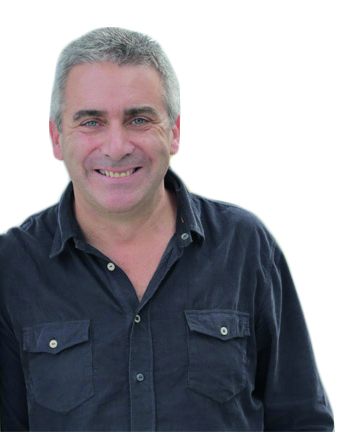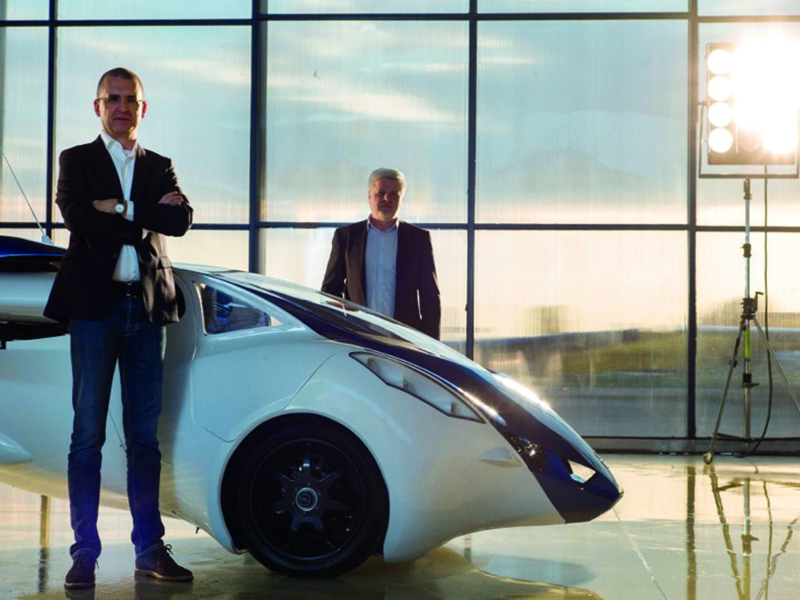By Peter Fisk
Peter Fisk explores how the next generation of businesses innovate from the future back, and outside in. They start by finding the best opportunities for future growth, then shaping these markets in their own vision, defining the space and rules, practices and value perceptions, to their own advantage. Then they set about designing the right business model and customer experience to win on their terms. They are the “market makers”.
The best opportunities for business – to find new growth, to engage customers more deeply, to stand out from the crowd, to improve their profitability – is by seizing the opportunities of changing markets. The best way to seize these changes is by innovating – not just innovating the product, or even the business itself, but by innovating the market.
Today’s most successful businesses – from Airbnb to Tesla, Apple to Uber – innovate the market – what it is, and how it works.
In the old world we accepted markets as a given – the status quo – and competed within it, with slightly different products and services, or most usually by competing on price. Most new products were quickly imitated, leading to declining margins and commoditisation. Most companies now receognise that this is not a route to long-term success in a rapidly changing world.
Fast-changing markets demand fast-changing businesses.
Winning in this new world requires a bigger ambition – to change the game, not just play the game. Winners recognise that markets are malleable, geography is irrelevant and categories are outdated, that boundaries blur and new spaces emerge, and that practices and perceptions can be shaped to your advantage.
These “Market Makers” innovate their market, and then innovate their business with exponential impact – like WhatsApp creating $19bn in three years and Uber $60bn in 5 years. They start from the future back, making sense of change, seeing the new patterns and possibilities, harnessing the power of ideas and digital networks to win in new ways. This requires new leadership thinking, and for the whole business to innovate.
10x not 10% better
It all starts with an idea – indeed, you could say we now live in an ‘ideas economy’. Market Makers typically have really big ideas – not ones that can be quickly copied by others. Most ideas are incremental, and most ideas in business are usually around product functionality. They are more audacious. They think about making things 10 times better, not just 10% better. They think beyond the product, to the service and channel, the business model and customer experience. And ultimately how the market works.
But of course, ideas are not enough. You need to make them happen. That is an equally creative process, and certainly unlimited by internal capabilities, or the models which made you successful in the past. Once you have a direction, it’s about collaborating with customers and business partners to make new ideas happen – using concepts such as design thinking to explore deeper, lean innovation to implement faster, co-creation to engage people more closely, and new business models to ensure they generate superior returns.
Market Maker Example 1…
Aeromobil, the World’s First Flying Car
Searching for examples of market makers, I found myself in Bratislava, Slovakia. Stefan Klein, a retired Volkswagen car designer also has a pilots licence. He had a vision to combine his expertise and passion, and set about creating a flying car. After 7 years, his third version of Aeromobil scooped the top prize at Vienna Motor Show. On the road, it is a two-seater roadster. But when it arrives at the airport, driving onto the runway, the doors become wings and Klein can fly for 400km at 220kmph. With investment (and more importantly technical expertise in production) from Boeing and NASA, Aeromobil will soon be production ready, with a price points around Euro 200,000 and ready to create a new category for people who want to avoid traffic jams or just get one up on their neighbours.
Market Maker Example 2…
How ARM outsmarted Intel
Whilst market-making might seem more suited to entrepreneurs, it is large companies who can redefine markets with most impact. ARM, the UK-based semiconductor business, has outsmarted Intel in recent years by thinking differently. Whilst Intel was wedded to producing leading-edge yet standardised chips for computers, ARM set about designing chips for the world’s smartphones and mobile devices, a much faster growing market. ARM works with each business customer to develop more relevant, distinctive solutions, and then engages an ecosystem of partners to develop and produce them under license. The relatively small team in Cambridge has transformed how the market works, and in so doing has become the world leader in an incredibly fast-growth market.
Market Maker Example 3…
Nespresso is All about the Pods
Swiss food giant Nestlé, recognised that the future is much more about aspirations and experiences than products and needs. Nespresso is single-handedly responsible for increasing Europe’s annual household spend on coffee by over Euro 800. It does this through allowing people to make great coffee. Inspired by George Clooney, of course, and enabled by its exclusive machines, made under license by Krups. Once you’ve bought the machine, you join Le Club, and subscribe to a regular flow of pods delivered directly to your door. Compare this to other business models for coffee. The low cost machines available through retailers are accessible to everyone, but then the direct subscription model is incredibly efficient and profitable.
Market Maker Example 4…
Tesla’s Supercharger Network
Think about electric cars. The challenge for Elon Musk and his team as innovators was not simply to create a great electric car, but to create the market for the car too. This means creating demand, competition, and infrastructure. Tesla works hard to create a vision that engages people emotionally in the benefits of carbon-free travel, as well as the love for their brand. They started with a high-end niche roadster to build aspiration, then introduced mid and lower-end models for the ‘masstige’ market.
Tesla gave away much of their IP to encourage competitors to grow the market with them, and with their sister business Solar City, they are creating the world’s largest electric charging network. In the future, says Musk, we will choose to join his “Supercharger” network as the default solution to better driving. Of course, Tesla could just have waited for somebody else to do this. But they wanted to create a new ‘game’ which they could shape. They wanted to create the future of automotive in their own vision, and to define the rules (the infrastructure, the standards, the expectations) to their own advantage.

Tesla gave away much of their IP to encourage competitors to grow the market with them,
and with their sister business Solar City,
they are creating the world’s largest electric charging network.
Rethink Everything
Most companies like to focus on the ‘what’ (the product, service and experience). This is where they have conventionally succeeded. They seek to innovate within the existing game. Most of their solutions are similar to competitors – small differences to design and functionality, and small differences in prices. Eventually, focus on the what, leads us to sameness – to commoditisation, to price discounting and diminishing profits. By first thinking about the ‘why’ and then the ‘how’, you can ‘reframe’ what you are about – to redefine the market, on your own terms.
This is what Apple did with the personal computer market. This is what Dyson did with the home cleaning market. Or Finland’s Supercell did in the gaming market. Or Spain’s Desigual in the fashion market. They stopped to think, to think bigger and smarter. Right now you can see market makers in every field – 23andMe in healthcare, SpaceX in space travel, OneWeb in global internet. DJI in drone delivery. New ideas for new markets.
Competitive advantage in today’s fast and crowded markets is not about being slightly better, or slightly cheaper, it is about having a better vision, a better view of the market, and how you can make people’s lives better. Market Makers ‘out-think’ the competition. In fact this is what innovative business leaders have always done – Akio Morita, Steve Jobs, Richard Branson. They are visionaries, but also revolutionaries – to challenge, to disrupt, to create – in order to leap forwards.
Beyond Products
Redefining the market is about more than launching a new product; it’s about creating a new demand and a new future. Once you have redefined how the market works, then you are in a position to create a long series of products to succeed in it. Apple is the obvious example. By creating a new market model, supported by a new business model, it was able to create multiple successes. In the beginning, iTunes was the real innovation, more than iPod. This changing the market, and was difficult to copy. Similarly, iPad and iPhone have become so successful, because of the App Store. Again, difficult to copy.
At the same time, there is a brand story that keeps moving. For Apple, this is about humanising technology, combining the emotion of great design, with simplicity of intuitive technologies. Building a brand that people trust, and ultimately where all the products work together and become something much bigger. This is perhaps where Asian technology companies have been less successful so far.
You can see the same approach at Nike, at Pixar, at Tesla. It is all about ‘horizon planning’, whereby you create a bold and audacious ‘vision’ working from the future back, and then plan how the journey will unfold. It is hard and soft – yin and yang, if you like. It is a functional journey of technology and functionality, but also an emotional journey of trust and desire.
Where to Start
“Market making” is a strategic challenge, for the whole business. It requires the full engagement of business leaders, as well as people with expertise and imagination in all parts of the business. These creative techniques are particularly useful in opening up our range of thinking, whilst also building courage and commitment to make them happen:
- Design Thinking – Deep diving to understand the needs and aspirations of customers more deeply – not just for existing products, but to redefine the problem, and opportunity to make their lives better. This means spending more time with people, exploring their worlds one by one, solving real problems in new ways. This is far more insightful than the old ways of doing mass-market customer research that was limited by the questions asked, and the statistical analysis of which resulted in average solutions for average people. The new approach to is to be more selective, more intuitive and exploratory.
- Parallel Worlds – Most good ideas are already out there, but often in different places. The same consumer who buys your sports shoes, also buys food, cars, phones, games, travel and much more. Look at other ‘parallel’ markets to see how the same people are responding to ideas in other sectors. If they sign-up to annual contracts for their phones, maybe they would do similarly for sports shoes. Or pay for the gym and get the shoes free, like in banking. Or pay per use, or by subscription, like in gaming. Don’t be obsessed with competitors, look to what your consumers are doing, and liking, in other places, then ‘copy adapt paste’.
- Strategic Framing – The most powerful strategic tool is to redefine the context in which you see your market, and your business. Most people define the same playing field, as competitors, and so end up playing the same game. By framing your market around customers, you have more opportunity to be relevant and different. Brazil’s Beauty’in combined food and drink with cosmetics, to define a new category of “alimetics” which they could shape and grow. Time Warner redefined themselves as an entertainment, rather than communications company, and saw an instant jump in share price.
The innovation process is about creativity (divergence) and commercialisation (convergence) to turn big ideas into exponential impact. This should actually be core to the strategic thinking of the business, not something to be delegated or done once the strategy is defined.
Fast and Agile
Today’s entrepreneurial mindset is to start fast, make mistakes and learn…and then as you gain more insight and experience, ‘pivot’ your business to where you really see the best opportunity. It requires a speedboat mentality – to stay small and fast, rather than trying to build a supertanker going in one direction. The world’s largest white goods company, Haier, is actually a collection of 1000 ‘speedboat’ companies, each incredibly entrepreneurial. Similarly GE has adopted a lean “FastWorks” model of test and learn.
As examples of agilty, Pinterest started life as Tote, helping people to explore online retailers and sending them updates about prices and availability. It realised users were mainly using the site to build and share ideas lists, and soon shifted course to focus on “pinning”. Groupon began as a platform for social action called The Point, before reinventing itself in the crowd-based local coupon business. Ushahida started as an African elections monitoring service, before growing into a crowdsourced new aggregator. Twitter emerged out of a mediocre podcasting concept called Odeo that was outshone by iTunes.
“Market making” requires agility – the ability to act quickly, be prepared to change direction, and to live without certainty. It’s like climbing a mountain, set out your vision – the mountain peak you want to get to – and then choose your path, whilst recognising you may well have to change your path depending on what it’s like, the weather conditions, and much more. You might sometimes even want to aim for a different peak, when you realise that the initial one is no longer appropriate.
Change the Game!
Today’s winners, existing companies seeking to find a better future, or start-ups looking for their space, create the future in their own vision, rather than living in the shadow of others. Think how you can shape the future to your advantage, to make sense of change, and define your own destiny.
Don’t just play the game, change the game.
About the Author
 Peter Fisk is a global business thought leader on growth and innovation, customers and marketing. He is a bestselling author, expert consultant and keynote speaker, helping business leaders to develop innovative strategies for business and brands. Having trained as a nuclear physicist he went on to work with brands from Coca Cola to RedBull, Virgin to Vodafone, is Professorof Strategy at IE Business School, Madrid, and is the founder of GeniusWorks, his own innovation company based in London. Peter features on the Thinkers 50 radar of best business thinkers.
Peter Fisk is a global business thought leader on growth and innovation, customers and marketing. He is a bestselling author, expert consultant and keynote speaker, helping business leaders to develop innovative strategies for business and brands. Having trained as a nuclear physicist he went on to work with brands from Coca Cola to RedBull, Virgin to Vodafone, is Professorof Strategy at IE Business School, Madrid, and is the founder of GeniusWorks, his own innovation company based in London. Peter features on the Thinkers 50 radar of best business thinkers.
 Peter Fisk’s latest book is Gamechangers: Creating Innovative Strategies for Business and Brands.
Peter Fisk’s latest book is Gamechangers: Creating Innovative Strategies for Business and Brands.
Explore more ideas, articles and case studies, videos and toolkits, blogs and more at Peter Fisk’s website: www.theGeniusWorks.com Or email: peterfisk@peterfisk.com



































